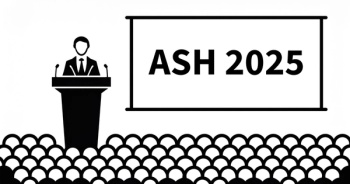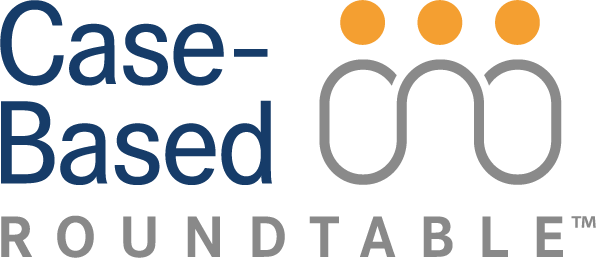
Isatuximab Combo Provides Durable Option in High-Risk Multiple Myeloma

In the first article of a 2-part series, Joshua Richter, MD, discussed how the triplet therapy of isatuximab, carfilzomib and dexamethasone, has impacted treatment considerations for patients with high-risk multiple myeloma.
CASE
A 60-year-old White woman was diagnosed with stage III multiple myeloma.
- Medical history: heavy smoker
- ECOG performance status: 0
- Three years ago, the patient developed an acute onset of renal insufficiency and hypercalcemia.
Laboratory values:
- Estimated glomerular filtration rate (eGFR): 44 mL/min/1.73 m2
- Serum creatinine: 2.9 mg/dL
- Serum β2-microglobulin: 5.9 mg/L
- Lactate dehydrogenase: 283 U/L
- Cytogenetics: amplification 1q; translocation 14:16 – high risk
Treatment
- At the time, she was treated with VRD (bortezomib [Velcade], lenalidomide [Revlimid], and dexamethasone) induction therapy, followed by autologous stem cell transplantation.
- She achieved complete remission with VRd and transplant and was negative for minimal residual disease (MRD).
- The patient was placed on lenalidomide maintenance therapy.
Two years on lenalidomide maintenance
- On follow-up, the patient reported having severe fatigue and pain in her back and legs that disrupted her ability to continue full-time work.
- M-protein: 1.98 g/dL (rapid increase from prior bloodwork)
- λ Free light chain: increased from 47.5 mg/dL to 136.7 mg/dL
- Hemoglobin: 9.8 g/dL
- White blood cell count and platelets: within normal limits
- Creatinine: 1.4 mg/dL (H; range: 0.59-1.04 mg/dL)
- eGFR:45 mL/min/1.73 m2
- Creatinine clearance: 40 mL/min
- PET scan shows new vertebral fracture at L1 and new lesions in both femurs.
- ECOG performance status: 1
The patient was then started on isatuximab (Sarclisa), carfilzomib (Kyprolis), and dexamethasone (Isa-Kd) and achieved a very good partial response (VGPR).
Targeted Oncology: What were the results with Isa-Kd in select subgroups of patients on the IKEMA trial (NCT03275285), and how does this compare to other agents?
JOSHUA RICHTER, MD: For the most part, everything...favored the triplet therapy.1 There's a couple [groups] that overlap a bit, but some that overlap even more. [For example], high risk does overlap but 1q gain does not...and the reason why some of these [groups have a better response] is in part because [you have to think about] what the heavy lifter is in a regimen, and what drugs within the regimen have an impact on risk.
If you look at the immunomodulatory imide-containing regimens, the lenalidomide-based regimens, even the pomalidomide [Pomalyst]-based regimens, they don't have the biggest impact on high risk [patients]. Proteasome inhibitors [PIs] do have an [impact though], so does bortezomib and carfilzomib, but it doesn't do the whole job as it doesn't get rid of disease completely…. So if you're already going beyond some PIs, or if you already have a PI regimen as your backbone, the bar is higher to overcome. If you look at the...regimens that include lenalidomide vs those with the CD38 drugs, it has a huge impact on patients with high risk, because lenalidomide has no impact on high risk.2
What was the depth of patients’ response at the 3-year follow up of the IKEMA trial?
At the end of the day, depth is very meaningful. If you look at the overall response rates [ORRs], there isn't a huge difference.3 But depth matters because we know the deeper response [the patient] gets correlates to the durability [of the response]. The difference in the ORR [between Isa-Kd and Kd alone] was 86.6% vs 83.7%, respectively.3 We're not talking about ORRs that are much different, because in early relapse [the patient is] going to do well; the problem is their numbers have come down, but they're going to come right back up. [The patient] is going to respond, which is wonderful, but what's important is how long is that going to stay there? How long till you have to reach in your back pocket for the next [treatment] option?
In terms of the ORR, not much is different, but with the VGPR, stringent complete response, and MRD, this is where there are bigger differences.3 [This is] because for the patients who got Kd had a partial remission and will sit there for a year or so [then their numbers will] come back up, but the same person who got that response [in the Isa-Kd] arm went much lower and stayed there for much longer, and that's where we see the difference [in these 2 arms].
What were the survival outcomes at the times of the 3-year follow up?
In the analysis of the intention-to-treat population, [the median progression-free survival (PFS)] was 19.2 months [95% CI, 15.8-25.0] for patients on Kd alone—19 months in the early relapse setting is not bad; it's pretty good.3 [However, the median PFS with Isa-Kd] was 35.7 months [95% CI, 25.8-44.0], and that's a big separation which occurs between both arms [HR, 0.58; 95.4% CI, 0.42-0.79].3 One of the things that CD38-based therapies have brought us is that a lot of our patients with myeloma are older and adding classical chemotherapy, and going from doublets to triplets, or triplets to quadruplets used to be a big ask, [but not with Isa-Kd now].
References
1. Moreau P, Dimopoulos MA, Mikhael J, et al; IKEMA study group. Isatuximab, carfilzomib, and dexamethasone in relapsed multiple myeloma (IKEMA): a multicenter, open-label, randomized phase 3 trial. Lancet. 2021;397(10292):2361-2371. doi:10.1016/S0140-6736(21)00592-4
2. Bumma N, Dhakal B, Fraser R, et al. Impact of bortezomib-based versus lenalidomide maintenance therapy on outcomes of patients with high-risk multiple myeloma. Cancer. 2023;129(14):2179-2191. doi:10.1002/cncr.34778
3. Martin T, Dimopoulos MA, Mikhael J, et al. Isatuximab, carfilzomib, and dexamethasone in patients with relapsed multiple myeloma: updated results from IKEMA, a randomized Phase 3 study. Blood Cancer J. 2023;13(1):72. doi:10.1038/s41408-023-00797-8








































